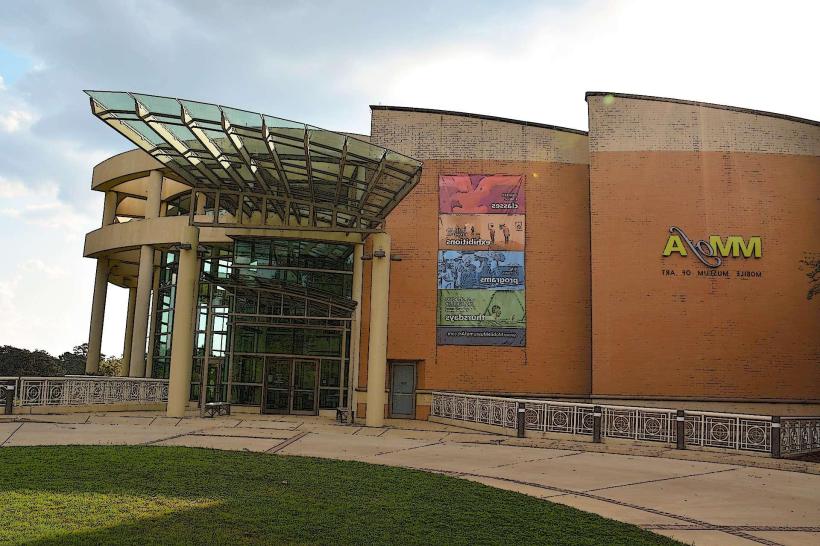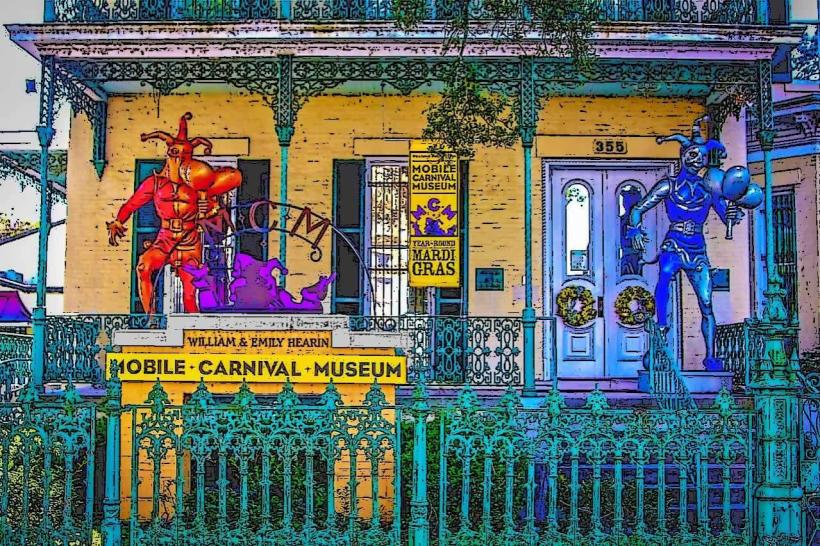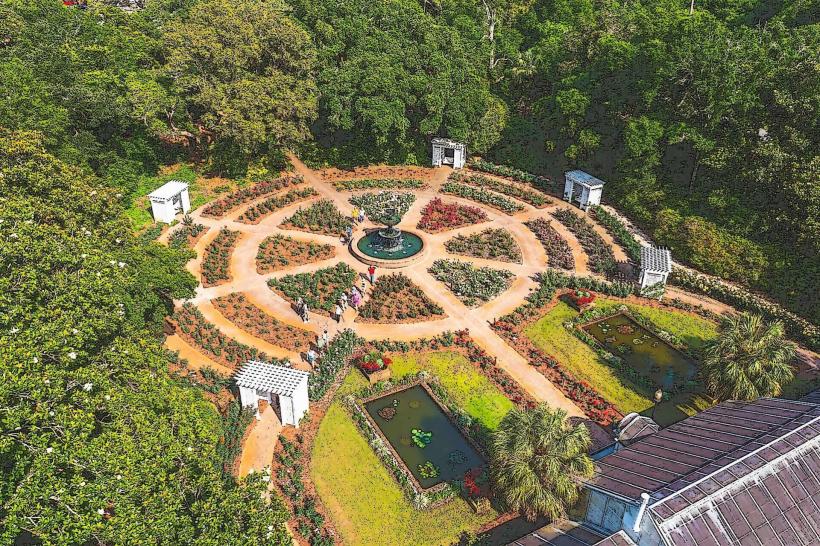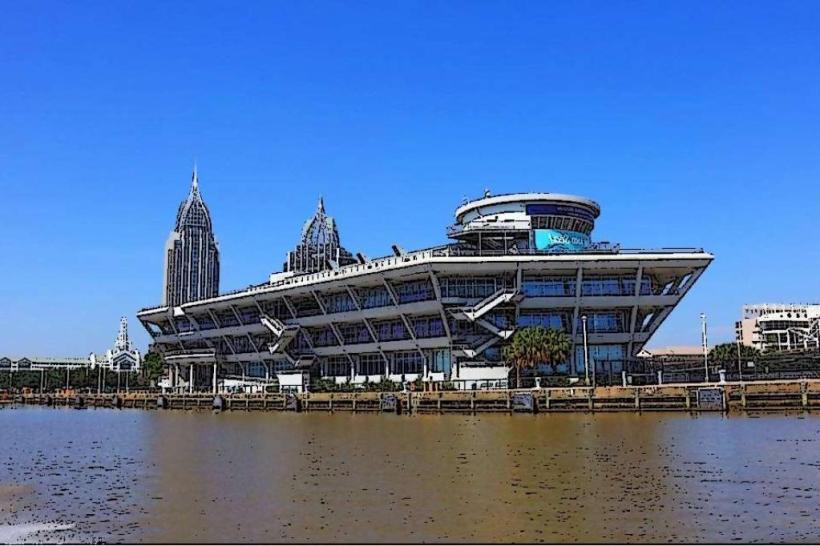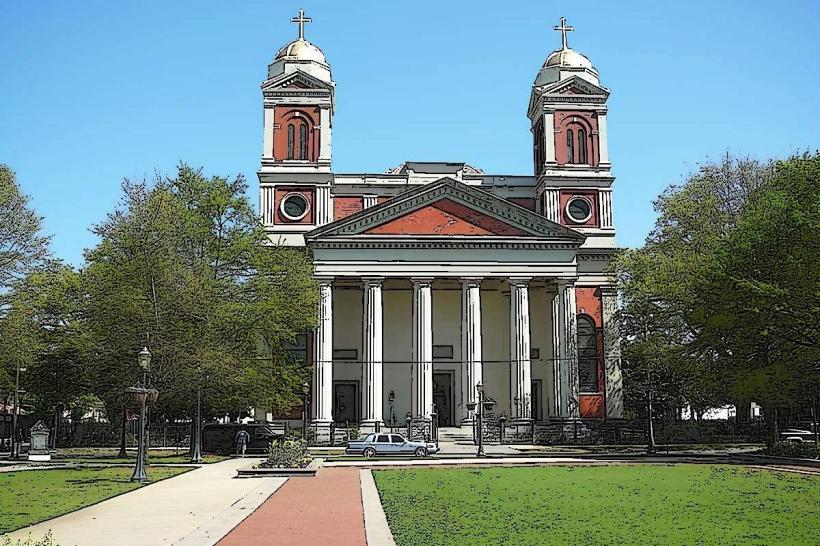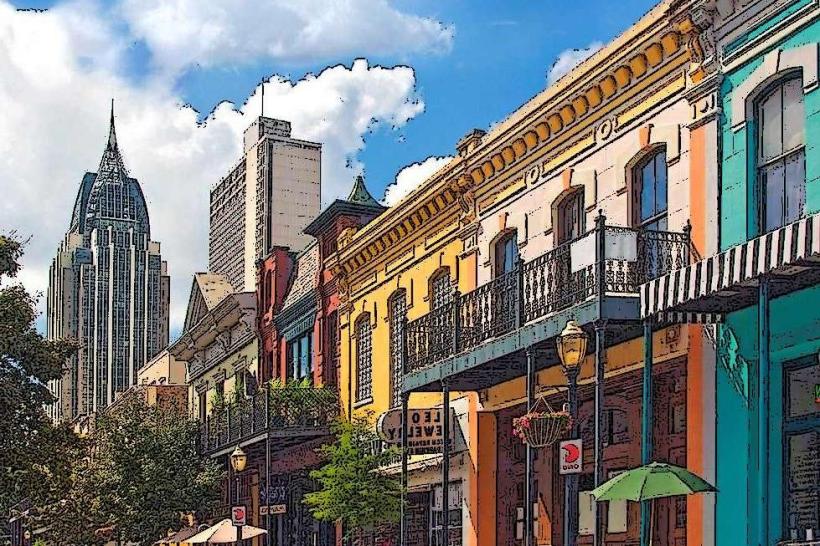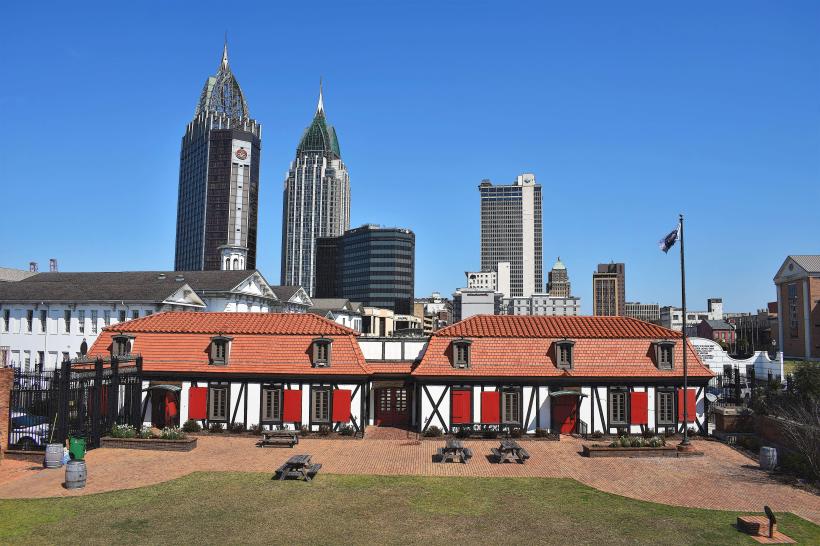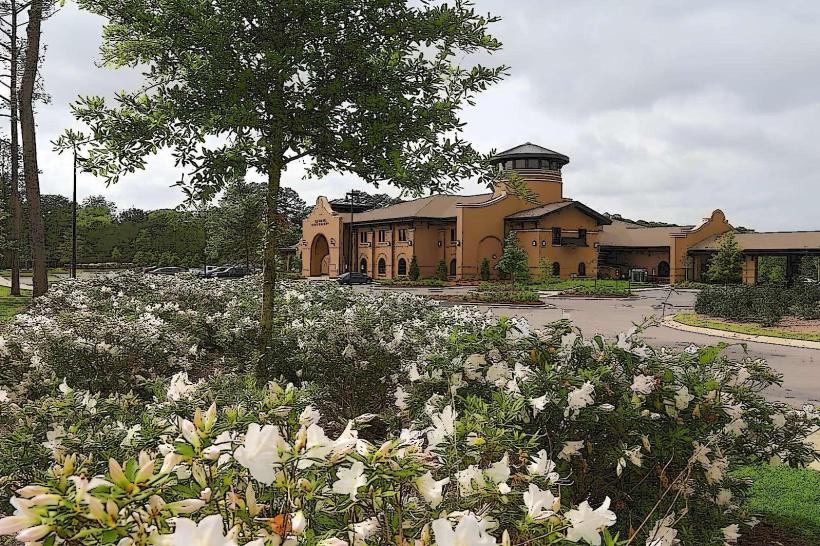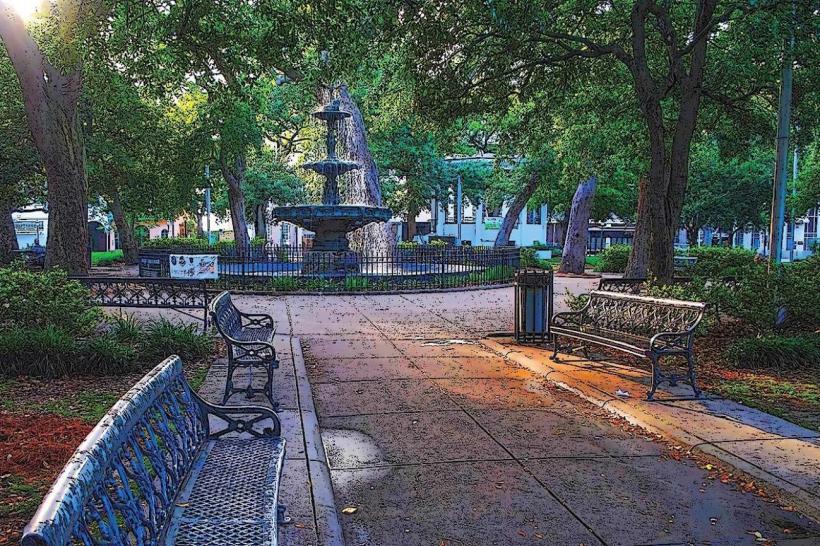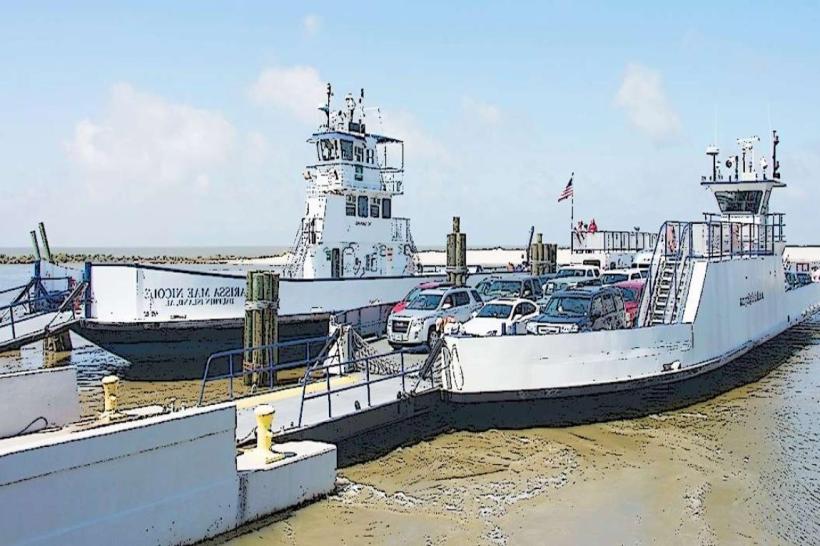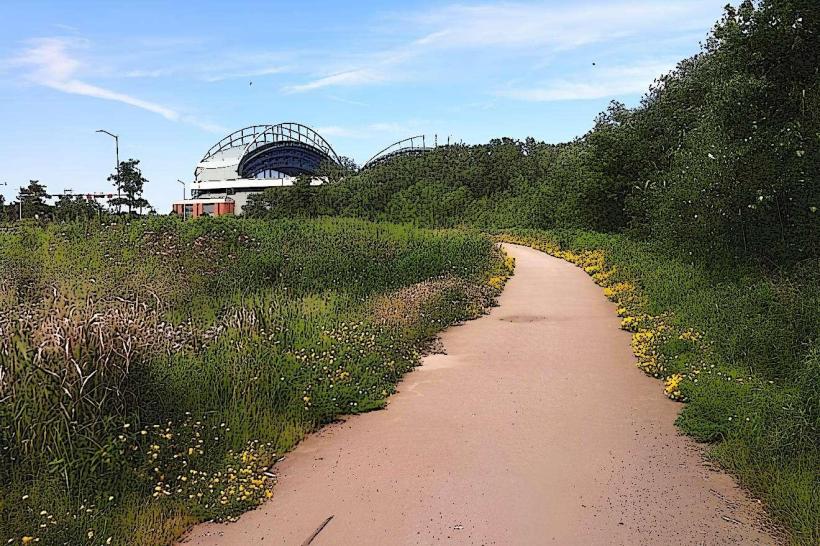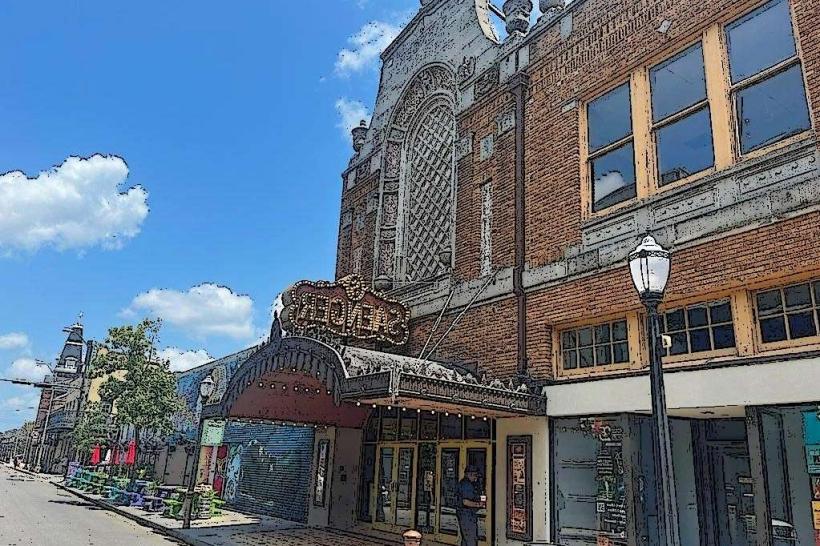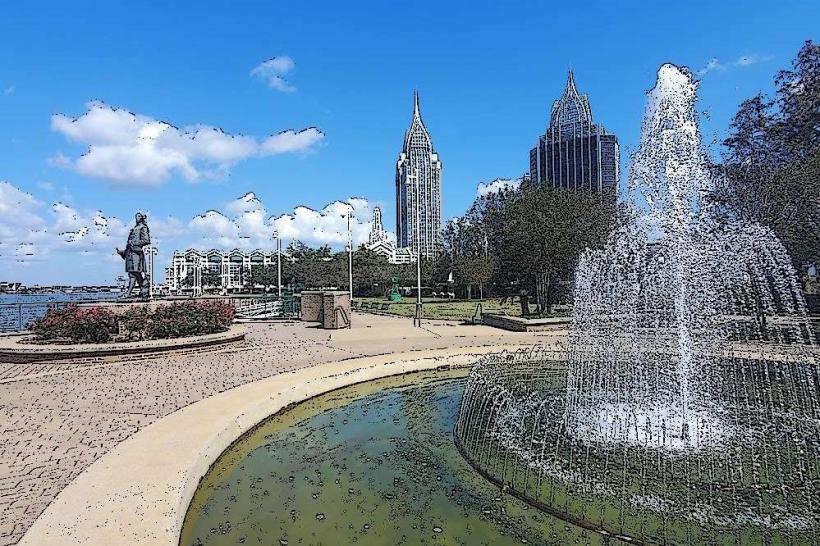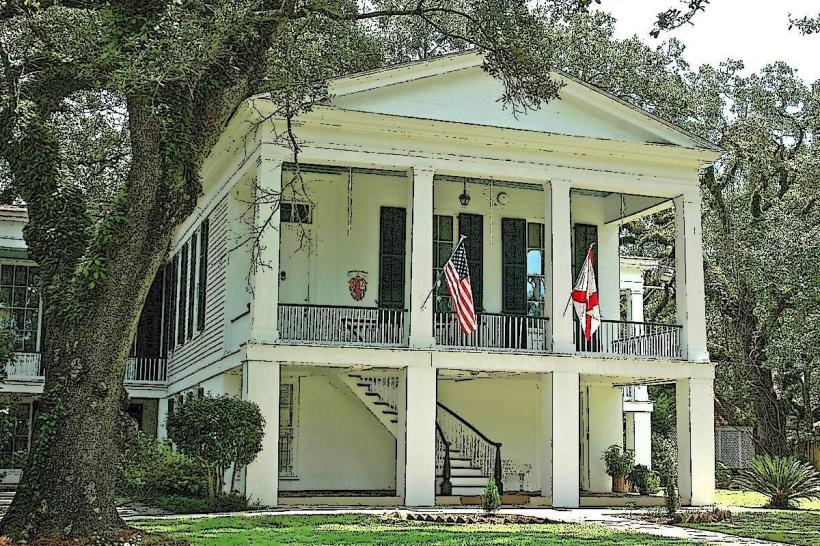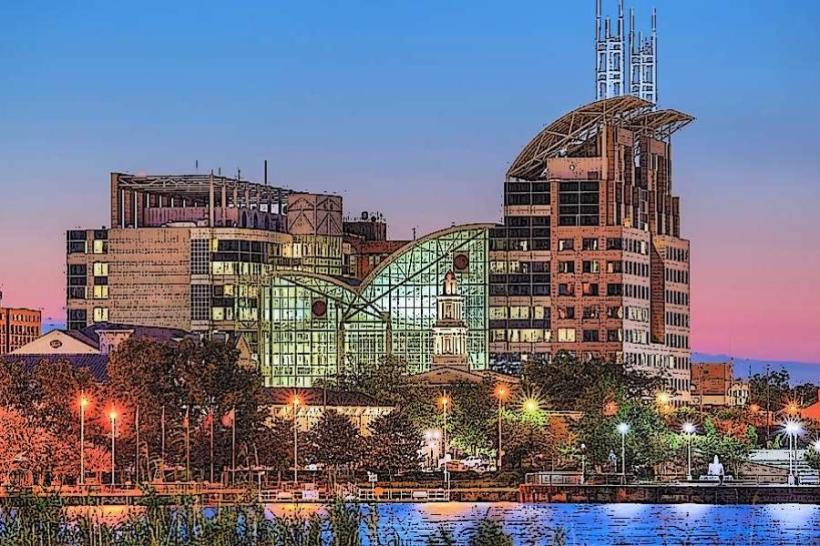Information
Landmark: Theodore Roosevelt ParkCity: Mobile
Country: USA Alabama
Continent: North America
Theodore Roosevelt Park, Mobile, USA Alabama, North America
Theodore Roosevelt Park in Mobile, Alabama, is a historic public green space located at the foot of Government Street, where downtown Mobile meets the waterfront. It is best known as the setting for the iconic Admiral Raphael Semmes statue and as one of the city’s oldest civic gathering places. The park connects Mobile’s downtown core with the Mobile River and has long served as a symbolic entry point into the city.
History and Development
The park was created in the early 20th century and named in honor of President Theodore Roosevelt, reflecting the city’s admiration for his leadership and progressive spirit during his presidency.
It was laid out as a landscaped civic space with formal walkways, lawns, and shade trees, offering both a ceremonial function and a leisure area for residents.
In 1900, the bronze statue of Admiral Raphael Semmes, the Confederate naval officer who commanded the CSS Alabama, was erected in the park, becoming one of its most recognizable features.
Layout and Features
The park is designed as a triangular green plaza bordered by major roadways and situated near the Bankhead Tunnel entrance.
Its open lawns are framed by oak trees and palms, creating a shaded environment for walking or sitting.
The Admiral Semmes statue long stood at the center as a focal point, surrounded by flower beds and pedestrian paths. (In 2020, the statue was removed, though the park remains intact as a civic space.)
The park offers views of downtown Mobile’s historic Government Street corridor on one side and the waterfront and port area on the other.
Community and Civic Role
Roosevelt Park has historically functioned as a place for public ceremonies, civic events, and community gatherings.
Its location near major government buildings, banks, and transportation hubs has reinforced its role as a visible and symbolic civic landmark.
In modern times, it serves as a green space for downtown workers and visitors to relax, and it continues to feature in Mobile’s cultural landscape.
Cultural Significance
While the removal of the Semmes statue shifted the park’s identity, the site remains an important reflection of Mobile’s evolving history and civic memory.
It is valued as part of the historic Government Street corridor, tying together the city’s architecture, civic institutions, and waterfront.
The park’s dedication to Theodore Roosevelt highlights Mobile’s early 20th-century civic pride and its connection to national figures, while its later role in debates over public memory underscores the complexities of Southern history.
Visitor Experience
Today, visitors can walk the shaded paths, enjoy the lawns, and take in views of Government Street’s grand historic facades.
The park is easily accessible on foot from downtown attractions and is a short walk from the Mobile Convention Center and Cooper Riverside Park.
While relatively small in size, it remains a gateway park, serving as both a green respite and a marker of Mobile’s civic identity.

